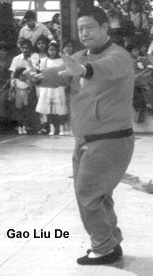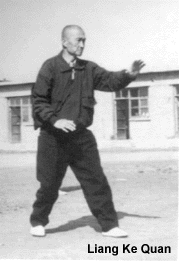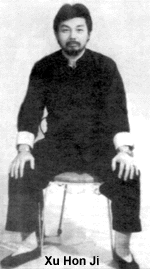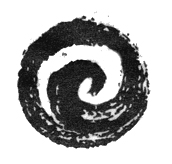Xing Yi Quan (Hsing Yi Ch'uan) is the oldest of the orthodox, internal styles of Chinese martial art (predating the creation of both Taiji Quan and Ba Gua Zhang). Xing refers to form or shape and Yi commonly refers to the mind or intent. Quan [fist] denotes a method of unarmed combat. Xing Yi Quan is commonly referred to as Form and Mind or Form and Will boxing. The name illustrates the strong emphasis placed on the motion of the body being subordinate to conscious control. The form the body takes is an external manifestation of the internal state of mind and is the underlying premise behind Xing Yi Quan as a method of combat.
The exact details of the origins of Xing Yi Quan are unknown. The
creation of the Art is traditionally attributed to the famous general and
patriot Yue Fei (1103-1141) of the Sung Dynasty. Being a beloved historical figure and
warrior, Yue Fei is credited with the creation of several systems of martial arts. There
is, however, no historical evidence to support the claim that he had anything to do with
the creation of the art Xing Yi Quan. The style was originally called Xin Yi Liu He Quan
[Heart Mind Six Harmonies Boxing]. The Six harmonies refer to the Three Internal Harmonies
(the heart or desire harmonizes with the intent; the intent harmonizes with the Qi or
vital energy; the Qi harmonizes with the physical strength), and the Three External
Harmonies (the shoulders harmonize [coordinate] with the hips; the elbows harmonize with
the knees; the hands harmonize with the feet). The practitioner's internal processes
harmonize and coordinate the external movement, unifying the person as a whole into the
most powerful state possible.
traditionally attributed to the famous general and
patriot Yue Fei (1103-1141) of the Sung Dynasty. Being a beloved historical figure and
warrior, Yue Fei is credited with the creation of several systems of martial arts. There
is, however, no historical evidence to support the claim that he had anything to do with
the creation of the art Xing Yi Quan. The style was originally called Xin Yi Liu He Quan
[Heart Mind Six Harmonies Boxing]. The Six harmonies refer to the Three Internal Harmonies
(the heart or desire harmonizes with the intent; the intent harmonizes with the Qi or
vital energy; the Qi harmonizes with the physical strength), and the Three External
Harmonies (the shoulders harmonize [coordinate] with the hips; the elbows harmonize with
the knees; the hands harmonize with the feet). The practitioner's internal processes
harmonize and coordinate the external movement, unifying the person as a whole into the
most powerful state possible.
The earliest reliable historical information we have makes reference to Ji Long Feng (also known as Ji Ji Ke) of Shan Xi Province as being the first to teach the art of Xin Yi Liu He Quan. Ji Long Feng was active near the end of the Ming Dynasty (early 1600's) and was a master of spear fighting [he had the reputation of possessing "divine" skill with the spear]. He is recorded as stating, "I have protected myself in violent times with my spear. Now that we are in a time of peace and our weapons have all been destroyed, if I am unarmed and meet the unexpected how shall I defend myself? " In answer to his own question, Ji Long Feng reportedly created a style of weaponless combat based on his expertise with the spear. He referred to his art as Liu He, The Six Harmonies.
Ji Long Feng had two very famous students. One was from He Bei Province and was named Cao Ji Wu. The other was from He Nan province and was named Ma Xue Li. It was at this point in history that the Xin Yi Liu He Quan [now also referred to as Xin (heart) or Xing (form) Yi Quan] divided into three separate yet related styles: the Shan Xi, He Nan and He Bei schools. After spending twelve years studying Xin Yi with Ji Long Feng, Cao Ji Wu entered the Imperial Martial Examinations and placed first [this was the most prestigious honor one could possibly win as a martial artist in Dynastic China, and as the reward for victory was an assured high level military appointment, the competitive exam attracted the cream of the martial crop from the entire country]. Cao's high profile martial status brought fame to the Art. Cao Ji Wu, in turn, passed on the Xin Yi Quan to two famous brothers, Dai Long Bang and Dai Lin Bang. Dai Long Bang further developed the Art and the written classics of the style are attributed to him. Dai Long Bang in turn transmitted the Art to its most famous exponent, the renowned Li Luo Neng (also known as Li Neng Ran; he was nicknamed "Divine Fist Li").
Li Luo Neng holds the distinction of being the greatest Xing Yi boxer in the styles' history and one of the top Chinese boxers of all time. Li Luo Neng taught his art in his native Shan Xi Province and also taught a great number of students in He Bei Province [his duties as a bodyguard involved escorting various members of wealthy families to and from He Bei].

Two of Li's most famous Shan Xi
students were Sung Shi pong and Che Ti Zhai. Li's most famous He Bei student was the
formidable Guo Yun Shen, who reportedly defeated all comers with his famous Beng Quan, a
straight punch to the body [as a youth in training, Guo would walk several miles to and
from his teacher's house every day, practicing his Beng Quan every step of the way]. After
spending several years incarcerated for killing a man in a platform challenge match [Under
the law of the times, fighters were not held liable if they killed their opponent during
organized challenge matches, but after the unfortunate fight in which Guo's opponent died,
he was arrested. When Guo protested and quoted the law of exoneration for platform
fighters, he was told that "a man of your level of skill should have more control and
was sentenced to several years in prison], Guo Yun Shen passed on his art to Wang Fu Yuan,
Liu Chi Lan and Sun Lu Tang, among others.
Liu Chi Lan passed on the Art to the most famous practitioners of this century, including Li Cun Yi and Zhang Zhao Dong. There are many practitioners of all three substyles of Xing Yi Quan active today, and the Art is still a popular and well respected style of martial art in China and abroad.
The art of Xing Yi Quan is divided into two main systems: the Ten Animal and the Five Elements. The Five-Element system is further divided into two main branches, the He Bei and Shan Xi styles.
The Ten Animal style is closest to the original Xin Yi Liu He Quan in form and practice. The movements in the forms are patterned after the spirit of various animals in combat, including the Dragon, Tiger, Monkey, Horse, Chicken, Hawk, Snake, Bear, Eagle and Swallow.
The Five Element based systems have five basic forms: Splitting, Drilling, Crushing Pounding and Crossing; these Five Elements form the foundation of the Art. The basic energies of the Five Elements are then expanded into Twelve Animal forms which include variations of the animal forms found in the Ten Animal styles as well as two additional animals, the Tai (a mythical bird) and the Tuo (a type of water skimming insect). Training in all systems centers on repetitive practice of single movements that are later combined into more complicated linked forms.
The direction of movement in Xing Yi forms is predominately linear. Practitioners walk through the forms coordinating the motions of their entire bodies into one focused now. The hands, feet and torso all arrive together and the nose, lead hand and lead foot are aligned along the same vertical axis (San Jian Xiang Jiao). The arms are held in front of the body and the practitioner lines up his or her centerline with the opponent's centerline. A familiar adage of Xing Yi Quan is that "the hands do not leave the [area of] the heart and the elbows do not leave the ribs." There are few kicks in the style and the techniques are predominately percussive in nature. Great emphasis is 'placed upon the ability to generate power with the whole body and focus it into one pulse which is released in a sudden burst.
The techniques of Xing Yi Quan are characteristically aggressive in nature and the Xin Yi Quan fighter prefers to move into the opponent with a decisive strike at the earliest opportunity. The style prizes economy of motion and the concept of simultaneous attack and defense. As the name implies, the form or shape of the movements is only a physical manifestation of one's internal state [intent]. A fundamental principle underlying all styles of Xing Yi Quan is that the mind controls and leads the movements of the body.
Training in He Nan (Ten Animal) Xin Yi Liu He Quan includes basic movements designed to condition and develop the striking ability of the Seven Stars [the head, shoulders, elbows, hands, hips, knees and feet]. From here, the student will progress to learning the basic animal forms. Basic form practice consists of repeating single movements while walking forward in various straight-line patterns. Later, the single movements are combined into linked forms. The techniques are relatively simple and straightforward and rely on the ability to generate force with almost any part of the body (the Seven Stars). Also included at more advanced levels are weapons forms (including the straight sword, staff and spear).
The Five Element based styles of Xing Yi Quan (Shan Xi and He Bei styles) traditionally begin training with stance keeping, the holding of static postures for prolonged periods of time (Zhan Zhuang). The most fundamental posture is called San Ti(Three bodies)or San Cai (Three Powers referring to heaven, earth and man). It is from this posture that all of the subsequent movements in the style are created, and most teachers place great emphasis upon its practice. After stance training, the student begins to learn the Five Element Fists (Wu Xing Quan). These are the basic movements of the Art and express all the possible combinations of motion which produce martial power (including energy which moves downward upward, forward, outward and inward). After a certain level of proficiency is acquired in the practice of the Five Element Fists, the student goes on to learn the twelve Animal and linked forms. The twelve Animal forms are variations of the energies of the Five Elements expressed through the format of the spirit of animals in combat. There are several two-person combat forms that teach the student the correct methods of attack and defense and the applications of the techniques practiced in the solo forms. Five Element based styles also include weapons training.
He Nan Xin Yi Liu He Quan(Ten Animal Xing Yi Quan) is characterized by powerful swinging movements and the ability to strike effectively with every part of the body. Walking forward while coordinating the movements of the arms generates the power of the body. There is also emphasis placed upon conditioning the body to receive strikes. This system is very powerful and aggressive in nature and the movements are simple and straightforward.
He Bei Xing Yi Quan is based on the practice of the Five Element Fists and emphasizes Large and extended postures, strict and precise movements and powerful palm and fist strikes. The techniques of He Bei Xing Yi Quan are akin to those of the Ten Animal styles in that they are aggressive and straightforward. The forms of Shan Xi Xing Yi Quan are very similar to those of He Bei Xing Yi Quan but the movements are smaller, with the arms held closer to the body. The footwork is light and agile and the style emphasizes a relatively "softer" approach to applying technique. A greater emphasis is placed upon evasiveness than in the other styles and techniques are to be applied without clashing with the opponent’s force.
The Martial Applications of XING YI QUAN
Xing Yi Quan is the oldest of the 'internal' martial arts, and the only internal art proven effective on the battlefield. Based on the movements of the spear, the strategies and techniques of Xing Yi Quan are designed to subdue an opponent in the shortest possible amount of time (as prolonged exchanges were not conducive to survival in mass battle situations). The basic fighting strategy of Xing Yi Quan dictates an aggressive "take no prisoners" attitude, with the goal of incapacitating an opponent as quickly as possible. There are no flashy or overly complicated techniques; the art is a study in practical efficiency. The fact that Xing Yi Quan fighters have been among the small percentage of the most elite for the past four hundred years in China lends credibility to the Art's efficacy in training, strategy and application.
STRATEGY AND TECHNIQUE
The underlying strategy of Xing Yi Quan is based around ending a
martial confrontation in the most expedient manner possible (usually, while
inflicting the maximum amount of damage to the opponent). It is not so much a system of
self-defense as aggressive offense. The founder of the Art, Ji Ji Ke (Ji Long Feng), was a
famous warrior, and his warrior's mentality carried over into the boxing style he created.
The "self-defense mentality" is one of escaping from a violent encounter
unharmed. The 'warrior' mentality is one of taking out the opponent as quickly and
efficiently as possible. Although, to a certain extent either of the above strategies can
be applied to similar techniques, Xing Yi Quan's techniques were developed with the latter
strategy in mind.
most expedient manner possible (usually, while
inflicting the maximum amount of damage to the opponent). It is not so much a system of
self-defense as aggressive offense. The founder of the Art, Ji Ji Ke (Ji Long Feng), was a
famous warrior, and his warrior's mentality carried over into the boxing style he created.
The "self-defense mentality" is one of escaping from a violent encounter
unharmed. The 'warrior' mentality is one of taking out the opponent as quickly and
efficiently as possible. Although, to a certain extent either of the above strategies can
be applied to similar techniques, Xing Yi Quan's techniques were developed with the latter
strategy in mind.
Since the principles of this Art were gleaned from battlefield experience, and because the Art was designed to be applied against a potentially armed and armored opponent, it favored direct, incapacitating techniques which would quickly end the encounter. Striking precise vital points (often protected by armor), complicated leverage techniques, prolonged grappling encounters and the use of force against force were all impractical under the above mentioned battlefield conditions. Continuous, vicious attacks with shocking strikes and quick debilitating takedowns were the techniques of choice.
The powerful 'shocking' strikes of Xing Yi Quan will damage and disorient the opponent no matter where they connect. These blows are generally not aimed at specific 'vital points,' but rather through the enemy's center of mass; this insures maximum shock and transfer of energy into the opponent. Xing Yi Quan grappling techniques involve rapid, bone jarring takedowns. The lifts and hip techniques of the wrestling arts are not commonly found in the Xing Yi Quan arsenal. From the point of view of the warrior on the battlefield, the longer he is engaged in a grappling encounter, the longer he is exposed and vulnerable to attack from a third party.
Xing Yi Quan techniques are based on continuous attack, or simultaneous attack and defense if the opponent manages to launch an attack first. Techniques which block first and then counterattack with a 'one-two' timing are not emphasized. The Art also contains a set of techniques that allow the Xing Yi fighter to attack the opponent even as he retreats. These techniques are introduced in the "Jin Tui Lian Huan" (Advanced Retreat Linked Form).
ELEMENTS AND ANIMALS
Based on the energies of the Five Element Fists, each of the Twelve Animal Forms contain a variation in strategy and technique based on the specific animal's intrinsic nature in combat. For example, although the Tiger Form and the Monkey Form are both variations of Pi Quan (Splitting Fist), their strategies and techniques manifest differently, changing in accordance with the nature of the animal they represent. The splitting energy of the Tiger Form has the fighter advance boldly and strike the opponent ferociously with the power of the whole body behind both palms, like a tiger leaping on its prey. In contrast, the splitting energy of the Monkey Form is utilized as a series of rapid fire whipping palm strikes which sting the opponent from various angles, like a clever monkey which avoids direct confrontation while striking without warning from unexpected angles.
Although the Xing Yi Quan fighter seeks to master the strategies and techniques of all twelve animals, he or she will, naturally gravitate toward specialization in a few of the animal styles most suited to personal temperament and physique. For example, the smaller, more agile fighter will naturally tend to specialize in the strategies and techniques of the Monkey, Swallow or Chicken Forms. The larger, stronger fighter will tend toward specializing in the strategies and techniques of the Tiger, Hawk or Bear Forms. It is also important to note that because it is the flavor of the animal's intent and not their particular movements which is assimilated into the forms, the movements of the Five Element Fists and Twelve Animal Forms can all be done with the intent of a single animal.
SPECIFICS
Finally, let's look at the strategies and techniques of Xing Yi Quan as applied to specific situations. If an opponent closes the distance with a committed attack (a committed punch, kick, push, tackle...), the basic aggressive nature of Xing Yi Quan's strategy prefers a simultaneous defense and counterattack. Ideally, at the point in time the opponent expects to connect with his own technique, he finds his attack neutralized and in the same instant feels the pain of the counterattack. Once the opponent is stunned, the Xing Yi Quan fighter follows up relentlessly until the opponent is defeated. In a 'hands up' fight, the Xing Yi Quan fighter prefers to attack first, thereby drawing the opponent into reacting. Using the opponent's reaction to his own advantage, the Xing Yi Quan fighter continues pressing the attack, never allowing the opponent time to regroup. In standing grappling situations, the Xing Yi Quan fighter seeks to avoid clinching and wrestling for an advantageous position; holds are preempted or broken by 'shocking’ the opponent from close range with one of the 'Seven Stars' (head, shoulder, elbow, hand, hip, knee and foot), thus giving the Xing Yi Quan fighter the advantage and opportunity to follow up, and, as usual, he continues to press the attack. The overall flow of the typical Xing Yi Quan technique generally follows the pattern of first making a physical connection with the opponent, then immediately (or simultaneously) setting up a shocking strike and ending the fight with finishing strikes and/or a fast and hard takedown. Although the Art has few ground grappling techniques per se, it does include a set of techniques for defending oneself from the ground if taken down by an opponent. These techniques are known as the 'Ground Dragon' method.
CONCLUSION
The aggressive nature of Xing Yi Quan can be summed up in the key words of the style: Brave, Fierce, Sudden, Wicked, Quick, Violent, First and Sharp. The study of its strategies and techniques provides a fascinating view of the mindset of the warriors of old. In the modern world, Xing Yi Quan training, besides conferring excellent health benefits, provides a practical, no-nonsense approach to cultivating the attitudes and physicality necessary for real fighting ability.

